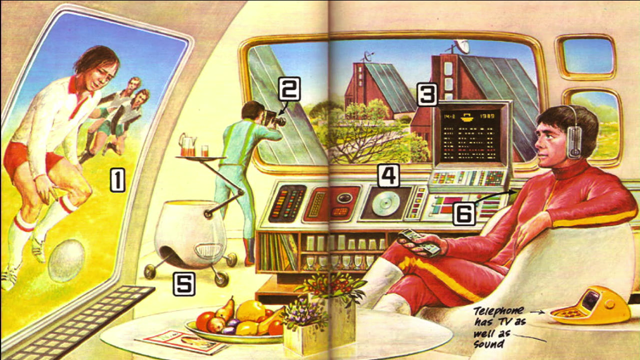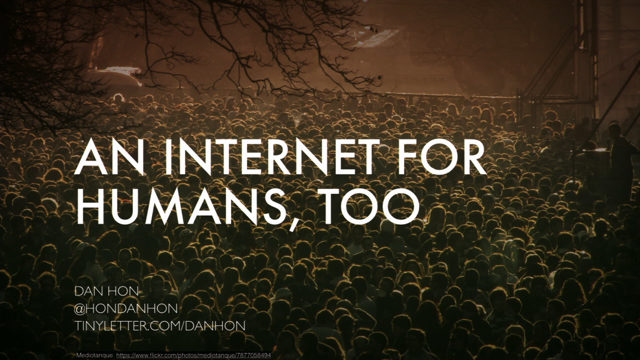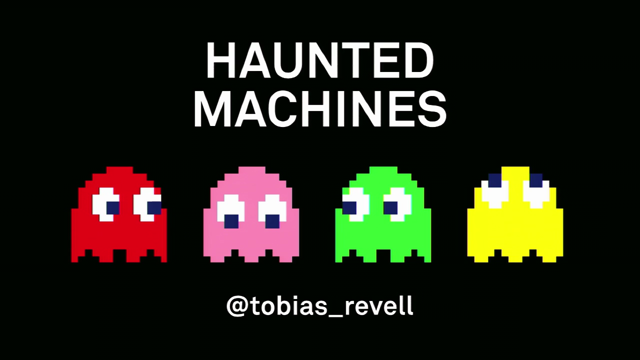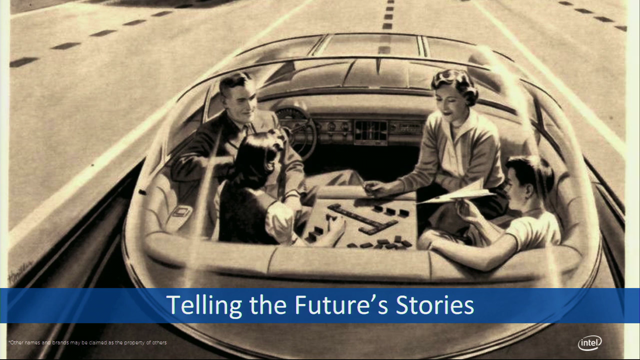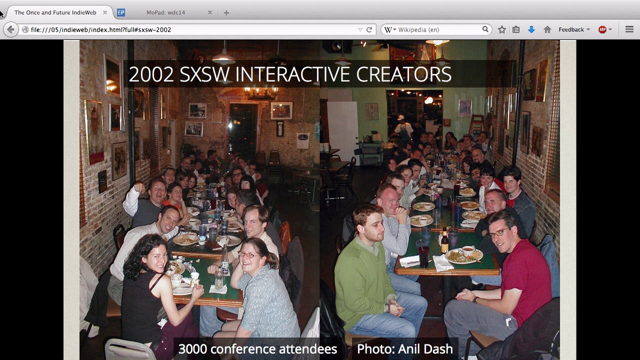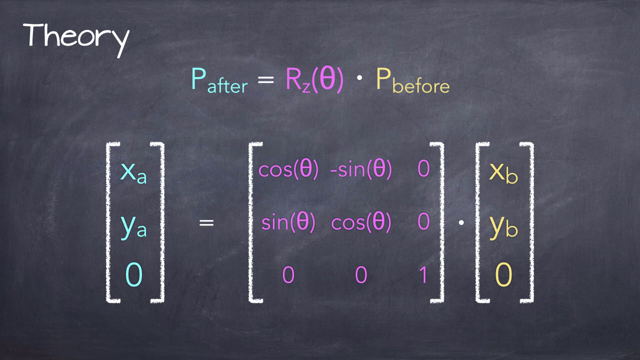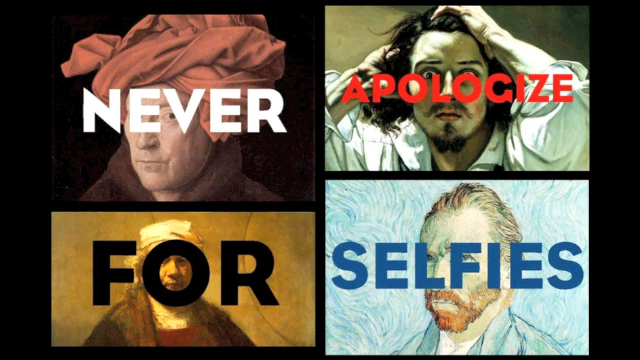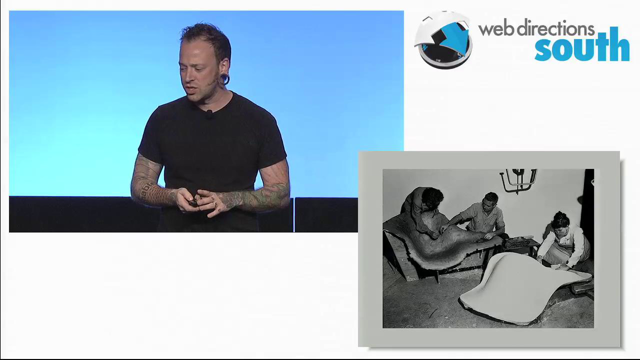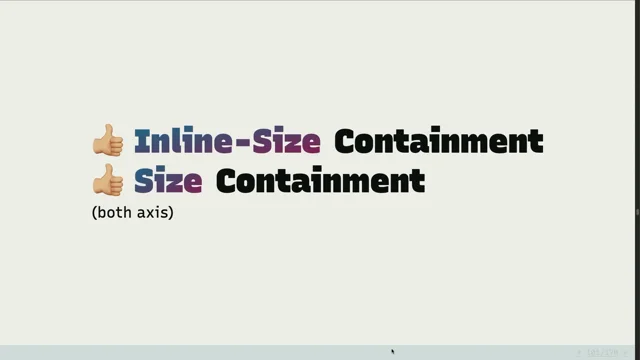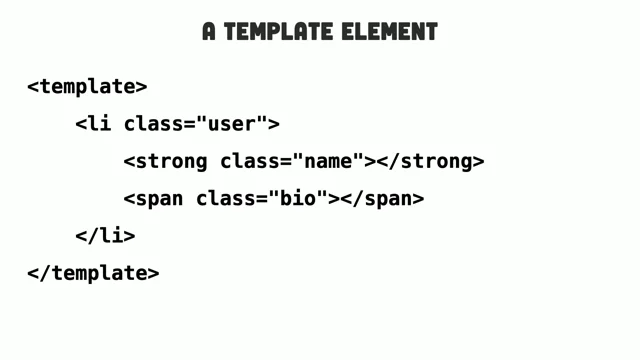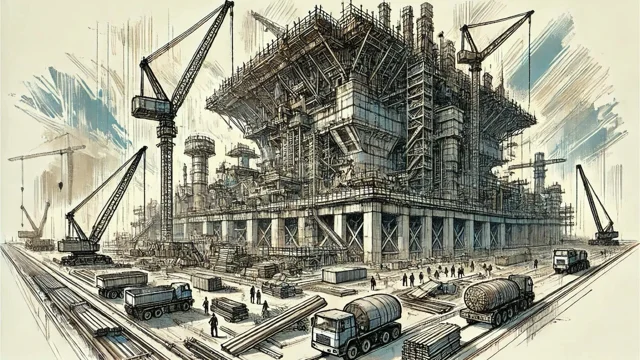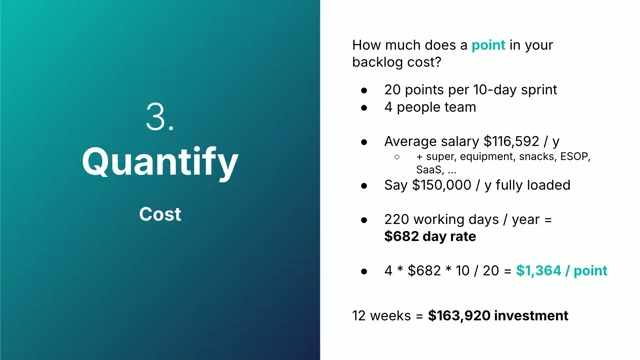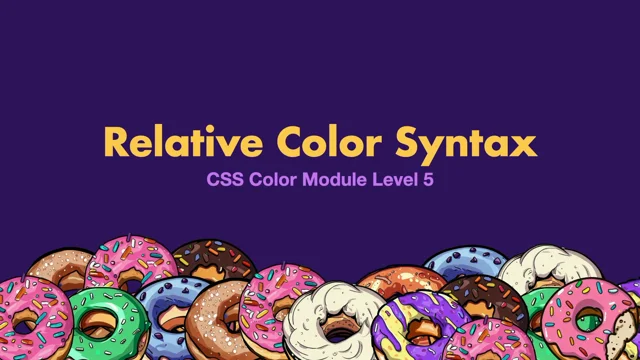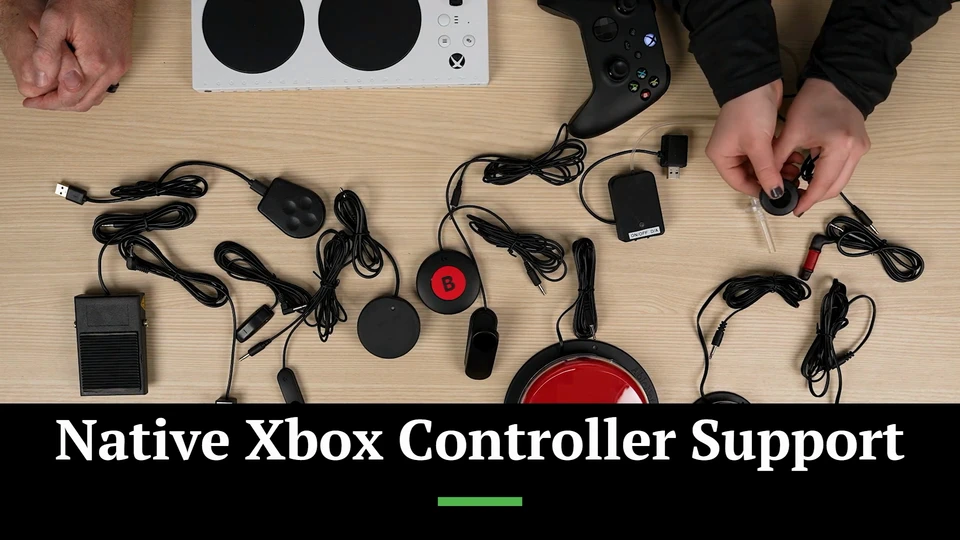We Need To Rewild The Internet
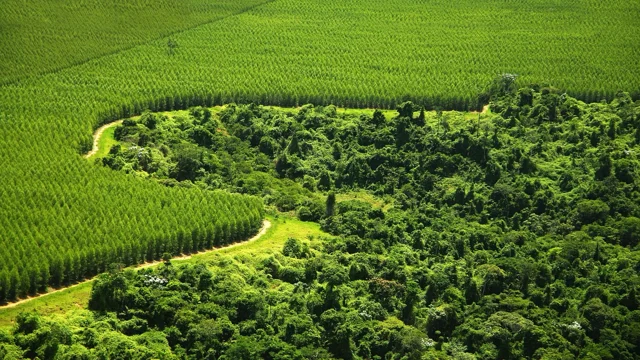
The Forest and the Internet
Maria Farrell begins with a 17th-century German story about the enclosure of forests, where lords chopped down diverse old-growth forests for profit and replanted them with monoculture conifer plantations. This act, driven by a desire for order and legibility, ultimately led to the forest's demise. She parallels this story with the current state of the internet, arguing that it has similarly shifted from a diverse, decentralized ecosystem to a controlled, monoculture plantation dominated by a few large tech companies.
The Architecture of the Early Internet
Farrell describes the architectural principles that made the early internet robust and resilient: decentralization, diversified functionality, dumb networks, open protocols, and layered architecture. These characteristics prevented any single entity from controlling the entire network and fostered innovation.
The Rise of the Tech Lords and the Monoculture Internet
The presentation shifts to the current internet landscape, dominated by a few large tech companies that have enclosed the digital "forest" and established a monoculture, limiting diversity and control. This is visualized as a shift from a Tetris-like structure of interconnected layers to a windowless skyscraper, trapping users within closed ecosystems.
Social Media and the Autocratic Model
Farrell draws parallels between the social dynamics of dominant social media platforms and autocracies. She argues that these platforms atomize individuals, disrupt social relationships, bombard users with disinformation, suppress external media, and foster a relationship solely with the controlling algorithm, mirroring the dynamics of autocratic leadership.
Big Tech and Autocracy
The discussion delves into the relationship between big tech and autocratic regimes, highlighting the alignment of their interests and worldviews. Farrell points out the platforms' choices to prioritize far-right content, their reluctance to invest in content moderation, and the personal political views of some tech leaders as contributing factors.
The OFG Theory of Internet Governance
Farrell introduces her "OFG" (One Fucking Guy) theory of internet governance, arguing that the centralized power structures within tech companies place significant control over online discourse and connections in the hands of a few individuals.
Tony Benn's Questions and the Challenge to Democracy
Using Tony Benn's five questions about power, Farrell challenges the democratic legitimacy of the current internet governance model. She emphasizes the need to reclaim control and reshape the internet to align with democratic principles.
The Importance of Real-World Networks and Solidarity
The presentation highlights the importance of real-world networks and solidarity, using examples like the miners' strike in 1985 and the formation of the French resistance. These examples illustrate the power of weak ties and diverse connections in fostering social change and resilience.
The Strength of Weak Ties and Resistance
Farrell explores the sociological concept of "the strength of weak ties," explaining how connections beyond immediate networks contribute to finding opportunities, fostering resistance movements, and creating a sense of community.
Clumpy Networks and Healthy Habitats
Using visualizations of real-world social networks and fungal networks, Farrell argues that "clumpy" networks, characterized by diversity and interconnectedness, create healthier and more resilient habitats than centralized structures.
Rewilding the Internet
Farrell introduces the concept of "rewilding" the internet, drawing inspiration from ecological principles. She suggests that by prioritizing diversity, decentralization, and getting out of the way of organic growth, we can create a healthier and more resilient internet ecosystem.
The Benefits of Rewilding
The presentation explores the practical benefits of rewilding, using examples from Scotland to illustrate how removing controlling forces can lead to increased diversity, abundance, and carbon capture. This analogy is applied to the internet, emphasizing the potential for positive change through decentralization and diversity.
Challenges and Actions for Rewilding the Internet
Farrell proposes practical challenges and actions for rewilding the internet, including envisioning a better internet experience, supporting alternative platforms and services, embracing open standards and open source, and contributing to the development of a decentralized web.
Funding and Supporting a Rewilded Internet
The discussion addresses the financial aspects of rewilding the internet, advocating for alternative funding models beyond ad-click surveillance. Farrell suggests directly supporting services that align with the values of a decentralized and open web.
Tools and Resources for a Better Web
Farrell offers specific examples of alternative tools and platforms that promote a healthier internet experience, encouraging the audience to explore and adopt these alternatives.
The Role of Open Standards and Open Source
The importance of open standards and open source in building a more decentralized and resilient web is emphasized. Farrell calls for greater involvement in these communities and contributing to the development of open web technologies.
A Hinge Moment and the Growing Movement for Change
Farrell concludes by highlighting the current moment as a pivotal time for the internet and emphasizing the growing movement of individuals, governments, and investors who are actively working towards a more decentralized, open, and democratic web.
A Call to Action: What Will You Do With Your One Wild and Precious Life?
Inspired by Mary Oliver's poetry, Farrell leaves the audience with a call to action, urging them to consider their role in shaping the future of the internet and contributing to a more positive and human-centered online experience.
Thank you very much.
so I come from Ireland and Ireland is the land of saints and sinners, but also the land of stories.
So I'm going to start off by telling you a story.
It's a story of the forest.
It is a story that starts in Germany in the 17th century, the very place in time where lots of the fairy tales that many of us grew up with came from.
The place of Grimm's fairy tales.
And the forest at this time covered most of, what we now think of today as Germany.
And it was dense, it was deep, it was thick, it was diverse.
And it was owned both by peasants and by lords.
The lords owned it, but the peasants had rights of access.
They could go and forage, they could grow, they could hunt.
They were allowed to use it in many, different ways.
But the lords were not happy with this scenario.
And the lords decided, you know what?
We have enough.
We don't want to share.
We have enough of sharing.
We don't want to share anymore.
We're going to close the forests.
We're going to enclose the forests.
And so they did.
They kicked the peasants out.
They built fences.
They prosecuted trespassers.
In fact, quite often they killed trespassers.
And they kept the forest for themselves.
And the first thing they did, having built the fence around the forest, was they chopped it down.
They chopped down all of the old growth.
The old growth that had been there, growing trees centuries old.
Forests that had been laying down soil and diversity for literally tens of thousands of years.
They chopped it all down and they sold it all off.
And then they said to themselves, this is fantastic, we are Prussians, we are people who like straight lines, we like marching, we like things to be orderly, so we're going to plant again, and this time we're going to do it right, we're going to make the forest not look like this kind of clumpy, messy place over here, we're going to make it orderly, and full of straight lines, and the same species, and no understory, none of those kind of brushes and, shrubs and little plants.
It's going to be clean, and it's going to be beautiful, and it's going to be legible.
We will be able to count every single tree, and we will count them all the way through until we cut them down.
And that is what they did.
They planted single species conifers, they grew them, 70 or 80 years later.
They harvested them again.
It was a bonanza.
It was a history changing, epoch making harvest of timber that made fortunes and made that, made much of Germany, much of Prussia as a country.
And after they had spent all the money on townhouses and bull gowns and on paying off their second son's gambling debts and fighting a couple of really short and unnecessary and rather brutal wars.
They said, look, we better plant again.
This has worked out so well this time.
We're just going to do the same thing again.
Straight lines, single species, off we go.
And those of you who have heard a European fairy tale will know they often happen in threes.
And so on this, time, the third expected bonanza.
It didn't quite go according to plan.
After 20 or 30 years already, they noticed the trees they had planted were spindly and weak.
They were blown over in storms.
They were ravaged by disease.
In fact, so many of them died that the German language, they invented a new word to describe what had happened.
Wostreben, forest death.
They had literally killed the forest.
And that story, the story of forest death, is also the story of our modern internet.
See, we started off with an internet that was diverse, that had many, different species and kinds and ways of doing things.
We started off with an internet that was owned by many people and had many different uses.
It wasn't all about proprietary ownership.
It wasn't all about enclosure.
It wasn't all about extraction.
And it wasn't all about legibility.
It wasn't all about coercion and it wasn't all about control.
It had, and it is so delightful to speak to a technical audience about this.
It had some very fundamental architectures that made it special, that made it that diverse, robust, resilient, delightful, unexpected, imaginatively joyous place that it was.
First of all, it was decentralized.
It was a network of networks that anyone could join.
It was the first example of technological permissionless innovation.
You didn't have to apply for the first time to your local, national incumbent telco to be allowed to join onto the internet.
You just got to do it by using an open protocol.
And the particular importance, it was, had D it had diversified functionality.
And so the kind of the, foundation act of saying it's going to be a packet switch layer, a packet switch network, and the packets are going to have information on the outside of the packet about where the packet is going, but the information inside the packet, the content of that packet.
That is not going to be available to all of the transit networks it goes through.
And that very simple, almost, bewitchingly unimportant, subtle, decision created a division of labor across the entire internet, because it meant that the people who are using the network to push things through, basically it meant we got dumb networks, much to the chagrin of the telecoms operators who saw this connecting computers thing coming and said, we want that, we want to own it, and we wanted to make it hierarchical, centralized and controlled.
And so that notion of functionality worked all the way through the layers of the internet.
In fact, it gave us a diversity of players and layers.
At every different layer of the internet, you had different players.
And owning or having control in one particular layer did not give you the ability to control the others.
So the basic physical infrastructure layer, the wireless, the fiber optic networks that we now have, and the satellites.
That was a distinct layer that was not changed, nor could it change the layer above it.
The protocol layer where the, almost the, foundation DNA of the internet, TCP IP protocol that existed there and was, an open standard.
SMTP, the email protocol and open standard.
And then later when the worldwide web was invented again, open standards all the way.
And above those, the application layer.
Again, if you controlled the layer below, which you couldn't cause it was open standards, you couldn't control the application layer.
That was where browsers live.
That's where app stores live.
And then, of course, perhaps the greatest political importance, the top layer, the content layer, where social media lives, where Netflix lives, where websites live.
That layer was, again, independent from all of the others.
And the two things that held all of that together, the glue that makes them stick, and also the oil that makes them be able to move around in a frictionless manner as the layers navigate constantly in a dynamic, emerging network that is the network of networks, open standards and open source.
And that's how we had this fantastic, diverse, open, resilient internet.
But of course, that's not what we have today.
So what we've seen in the last 15 or 20 years is the lords have come back and said we own the forest, we're going to take it for ourselves.
The Lords being the few large big tech companies who have enclosed all of that, all of those networks and who have changed, resilient, diverse, frankly unpredictable and sometimes bizarre sets of relationships, both social and personal that, and, networking that make up the internet have changed them into a single architecture of control, coercion and legibility.
And so now we have an internet that is a bit more like a plantation.
It's not an ecosystem, although the tech bros love to call it that.
It's a plantation that is a single crop, single species, single business culture, single monoculture that is the kind of internet we have today.
And so I suppose when we look at that, we think, plantations are useful places to grow rubber, they're useful places to grow tea, but they're not good habitats to live.
They're not a place you want to be in forever.
And what we've actually seen is that this landscape of coercion, legibility, and control is now how the wild internet is.
And it's basically a series of planetary duopolies all the way up and down that technical stack, the stack that used to be different players, different layers.
So we basically, on a planetary basis, we effectively have two browsers.
We have two, two, two companies that basically provide more than 90 percent of the email, support in the world.
We have two app stores.
We have two operating systems for desktop.
We have two operating system for, mobile OS.
We have basically one instant messaging, with a little bit of Apple.
We have one search and if you can see the tiny dot down there, that's Microsoft's Bing, keep going guys.
And so you see what used to be a different kind of, almost like a Tetris game of different players and layers, all kind of interacting with each other and creating the internet from moment to moment is a bit more like a windowless skyscraper.
And it's a windowless skyscraper because once you're inside of it, you can't get out.
And once you're inside of it, you can barely even see that the world actually, is made up of more than windowless, other windowless skyscrapers.
And look, that's bad for lots of reasons, but not just for kind of a, like an early internet person or an early web person who remembers when it was all free and when we were all young and that was all great.
Those good times are amazing.
My knees didn't hurt.
And it's actually also important because it's both disrupting and distorting how we as humans, network together.
So here is a little schema of the three main social media apps in the world.
the meta that owns an Instagram and Facebook, Google, YouTube is one of the bit is one of the top five.
And of course, TikTok, and I put them into little rectangles.
and I've put a, because they look like a bit like mobile phones and each of those dots, think of that as a person and instead of being, and these companies say they bring us together, they say they make connections, but in fact, when you are in their little worlds, their little ecosystems, you're all of your connections to other people are actually being disrupted and, cut away.
You don't, you.
Put it this way.
You go onto Instagram and you find, I want to follow these people and I want to see that content and I want to hear about what's going on over there.
And you can keep hammering away.
You can keep hammering away saying, here are my preferences.
Here's my follow feed.
And you will not get to follow the people you want to follow.
Your job on those platforms is to be an atomized individual whose only point of relation is to the algorithm.
And the algorithm is controlled by the person who owns it.
There's also some, another peculiar aspect to the strange social networks that we have in these, platforms.
One is that you are constantly bombarded with disinformation.
Another is that they disrupt and destroy media and they don't want, they want you to stay inside.
So if you go on Instagram or if you go on Twitter, or indeed on Facebook and you put an external link to a newspaper or to a TV station or to something else outside of it, or to one of a website that you've made, that will instantly be throttled.
The algorithm does not want you to allow people to click out of the website.
So you're for, he kept inside the windowless skyscraper.
And what else?
So your, social network, your social relationships are disrupted and you're bombarded with disinformation.
The media is kept, kept outside and your only relationship is to the algorithm.
That is it's exactly the social model of how humans relate to the leader under autocracy.
It is the precise, mimicry of that.
And with the excuse that word art, when I looked up autocracy and wanted to get a really simple open, rights at one, I got a woman as the autocrat.
I like to live in that world.
That would be an interesting thought experiment.
a woman or a non binary person, somebody, other than the autocat.
We see in this, the autocracy, it's the same breaking down division of social relations because family, interest groups, political party.
Unions, all of those things get broken down under autocracy because different forms of networking, different, different ways of finding out what's going on and access to different kinds of help disrupt the ability of the autocrat to maintain power and to make sure that you relate to him and not to anyone else.
You get the same destruction of the media and you get the same very, strong incentives to stay inside.
So I think it's really remarkable to me how similar these two models are.
The Philippines, winner of the Nobel Prize, Maria Reza, she said a few months ago that big tech loves autocrats.
And on the one level it's such an obvious thing to say, yes we know that, but on the other it's not.
She, says that the far right autocracy is not just something that is, finds it easier to market itself, on social media platforms, but it's something that is so it's interest and it's worldview are so, similar, so aligned, that they almost match each other.
And we can see that in the social media platforms, have choices about what kind of content they platform, and it tends to be very, far, right?
Partly because of structural reasons.
If you're just clicking for like hate and fear and and you want to keep people engaged, the far right content does that for you much more easily than anything else.
Partly because the platforms do not wish to spend money on moderation, and moderation is hard, and it is costly, and it is costly to humans.
And normally between 80 and 90 percent of content moderation budgets of global media platforms goes to one country.
And that is the US and a little bit more of it goes to white English speaking countries and almost none of it goes to everywhere else.
So it's the, so the second way they keep these platforms very similar to autocracies is by refusing to spend money on making them better.
But I think the third way, and the way that has become so evident this year, is that some of the leaders of several of these companies have themselves gone over to the dark side, if you like, or perhaps just revealed that's where they always were.
And so the personal, political, far right extremist views of the individual men running these platforms are now so brazenly out for all of us to see, and they're not even bothering to hide it anymore.
And so the, union of autocracy and our very peculiar, bizarre, uncomfortable and unpleasant form of social democracy is now here for all of us to see.
I don't need to shame these guys.
They just shame themselves.
This guy too, he said this is the year that he stops apologizing for having done a COVID disinformation on his platform.
In fact, he says he's never going to apologize for anything ever again.
He's done with apologizing.
He doesn't need to and it's funny in one sense.
But it's also, when you think about the fact that the biggest communications technology that humans have ever invented, something which when we invented it was a glorious joint and common enterprise, almost on the scale, the level of the Sistine Chapel, also a group exercise.
And it's been corrupted and distorted into these kind of skyscraper, dark skyscrapers run by one guy.
I there are all sorts of theories that people have about internet governance and the one, and how, what all the strategies are and what all the players are and everything.
And I actually have one theory of internet governance and it's called the OFG theory.
The OFG theory of internet governance is the internet is run by one fucking guy.
It is one fucking guy who decides what the algorithm is going to show you.
One fucking guy who decides who you're going to be allowed to talk to.
It is one fucking guy who says you get on your phone, and you stay on your phone, and you read whatever the hell I want you to read on your phone, and you feel the feelings I tell you can feel, and you connect with the people I tell you can connect with.
That is the one fucking guy theory of the internet, and I think it's pretty accurate.
But, and I did say we were going to get inspirational, John did anyway, Tony Benn, the British, a fantastic British politician from the 70s and 80s had five questions, which he always asked of power.
And he said, what power you, anyone who has any kind of power, you have to be able to ask them, what kind of power have you got?
Where did you get it?
In whose interests do you use it?
To whom are you accountable?
How do we get rid of you?
And Tony Benn said, and he went to his grave saying this, if you cannot answer that last question, you are not living in a democratic system.
People, we are not living in a democratic system.
The internet as it is currently construed and comprised is an enemy of democracy and it is an enemy of much of what we wish to achieve in life.
This peculiar way, mode of social organization is disrupting our ability to connect to each other in ways that will allow us to deal with the greatest, some of the greatest challenges that our species, frankly, not merely our civilization, but our species has ever faced.
Climate crisis, the movement of peoples, all of the things that are coming at us, the, geopolitical strife that is coming down the track, all of those things to survive and thrive and flourish, and for there to be an after, we need to be able to make sure that our technological social networks act, are, look more like how we as people, interact with each other.
Because the only way we've ever achieved anything useful in and worthwhile in this life is actually by leaving the house, finding other people, finding networks, and finding solidarity with other people, who we may not even have known, making the unlikely alliances that social networks allow us to do.
In 1985, in Margaret Thatcher's Britain, which was a bleak and, uncaring place to live, the, and not great for Irish people, I have to tell you.
Very not great for Irish people.
They were locking us up and throwing away the key.
long before Arabs were the terrorists, it was the Irish who were the terrorists.
And we have a very particular idea of the rule of law and how much it matters.
The miners were on strike because all of their livelihood was being taken away.
And Margaret Thatcher tried to make it be a situation where they were alone, they were isolated, they were a tiny interest all by themselves and nobody was going to look after them.
Gay and lesbian groups in London read about this.
In fact, some of them had moved from those Welsh and other villages in the first place.
They got on buses.
They got on trains.
They went up to the mines in the north of England and in Wales.
They brought their signs and they protested with the miners.
And they helped to make some changes to slow down some of the, bad stuff.
But more importantly, they made networks.
They made connections, they grew solidarity in a way that has made lasting change, both for them and for all of us.
And later when lesbian and gay people in the UK and ultimately LGBTQI people were, campaigning and trying to get, trying to get protections, trying to be allowed to talk about who they are in schools, a lot of the relationships and the connections they had made with the miners, with the, the white straight working class men who were, you're told all the time, are the enemy of identity politics.
They showed up too.
And that's how we make solidarity, because that's how we make change.
Those kind of networks are real networks.
And this is an actual social network.
This is a social network of people that have been mapped by social scientists.
And the big circles are for people who know lots of people.
And the little circles are for people who just have a few little friends.
But everyone is connected and everyone is in there.
One thing social scientists have been able to figure out is that when the things that, the good stuff in life or the useful stuff in life, which might be finding a partner, finding a cheap place to live, not easy in this city, finding a job, all of those things we usually get not by our immediate network of people we know, but, of the people they know.
So it's networks of networks.
Sociologists call this the strength of weak ties.
And weak ties, the, feeling of solidarity with people you haven't met, but you have fellow feeling for.
That's also where resistance movements come from.
That is where the French resistance movement comes from.
That is where the fellow feeling that says, you know what, I am terrified of these people who have just invaded Amsterdam, but there's a Jewish family and we've got an attic and we're gonna put them up there and see how long we can go with that.
That is where the strength of weak ties works.
Resistance comes from the strength of weak ties.
Hope comes from it.
Possibility.
Again, here's another network of networks.
These are social networks that were mapped by librarians, great activists of our time in North America, and you can see you get these clusters and I'm going to say to you, does it remind you of anything?
Does it begin to look almost organic?
It doesn't look like a, designed structure.
It looks like an emergent complex network.
In fact, fundamentally, it basically looks like fungus and looks like, it looks like a bunch of fungus in, in a lab.
and I think they're beautiful, but I know everyone doesn't love them, but they're clumpy, but they're all networking there together.
And that's, I think, when we look at the organic nature of how networks are formed and where the good stuff comes from, we realize that, of course, something we knew and forgot is clumpy networks make good habitats.
Clumpy networks are where we like to live.
And so the question then is, how do we remake the internet and the web from the current, almost inhuman, atomized, maddening space that it is into something that is more like a clumpy network that we actually want to live in?
How do we go from this, to this?
First I'm going to go back to the Germans, or to the Prussians.
because there's something we know now about why that third crop failed.
Why the bonanza did not continue forever.
And that is .Underneath every forest and in all of the soil of everywhere we will ever live, there is a mycelial network, a network of fungus that are living under there.
A beautiful network of fungus.
And these little, strings are called hyphae.
They span continents.
And they are what make every forest that lives thrive.
Because they pass sugar, they pass water.
They pass information, they pass, a reaction response when predators are nearby.
They pass, information about diseases.
They pass all of this stuff through these networks underground from tree to tree through these networks.
And they're not just doing it to be nice, they're doing it because they're in a, a sort of a collaborative relationship with the trees.
And I think when we look at the, ecosystems that the tech bros say they have invented, that they only specify one particular kind of relationship, and that is predation.
If they think about habitats at all, they simply think about them in terms of predation, winner takes all, I'm the top guy, almost a toxic masculinity approach to nature.
But actual nature, as any biologist will tell you, has got lots of different commensural relationships.
Relationships where… I was in the, bottom of Western Australia last week in, out in the bush.
There was this, there was an, anthill with these tiny little green, saps, little green plants growing out of it.
Turns out, there's a very particular tree that likes to live over an anthill, drops its seeds into the anthill, they get worked down and worked down and the ants, create all of the, nice organic matter, that makes a really rich place for a plant to live.
And the trees grow up out of that, and then they produce more organic matter that the ants love to live in.
And that's just like a, there are literally millions of these kinds of relationships in nature, in ecosystems, and it's because the value of an ecosystem, which is a habitat that we want to live in, isn't just something that you can extract and take out the way big tech takes out data and it takes out money and it takes them out of public services and it takes out taxation.
It, deprives us of taxation.
It's that in a real ecosystem, the many ways we relate to each other are where the goodness is.
The unexpected ways we relate to each other, the unexpected connections that allow us to do things that are bigger than the sum of all our parts.
Rewilding is a, both a kind of a conservation method and also a philosophy that says, look, we know the world looks bad.
We know our habitats look almost unlivable.
But here is something ecologists have learned, and it is that sometimes all we need to do is get out of the way and nature will return.
Rewilding is basically a philosophy that says it is the network that is important, not any one person in it.
Rewilding has no interest in there being, one fucking guy.
Rewilding has no interest in previous kind of philosophies of conservation which are all about, let's save the wildebeest, or let's save the lion, let's save the single charismatic species because that's really important, or also in a weird kind of slightly weird masculinist kind of philosophy of nature.
Let's save the apex predator because he's the most important guy.
If you actually look at ecosystems, there is no such thing as an apex predator.
There is simply an incredibly elaborate and beautiful system, almost like a filigree of lace for passing calories around.
That's all.
We just pass calories around within the same system again and again.
We don't extract them and keep them for the billionaire.
We pass them around for everyone to use.
Rewilding is just really good at saying, look, it's actually the connections where the beauty is.
It's those weak ties.
It's that's where resistance is and that's where the stuff of life is.
And it works.
React, rewilding is also, and this is what the Prussians got wrong, rewilding is about saying, you know what, diversity and disorganization and unpredictability and not being, controlling this thing from the top down.
Diversity is actually what gives us strength.
Diversity is what gives the system resilience.
And if that sounds a bit too, out there or a bit too abstract, just throw your mind back to a few months ago, when the Microsoft CrowdStrike failure, one tiny little kernel update, took out tens of thousands of computer systems around the world, took down hospitals, took down airlines, took down entire cities and whole companies.
Just one company.
Because everybody was using it.
So if you think buying the one company is going to keep you safe, that is not the case.
But ecology tells us that.
Is diversity is resilience.
And so the aesthetic, straight lines, central control, we love marching, we love uniforms.
It's just never how humans have actually managed to adapt and cope and thrive.
Other great thing about rewilding is it works.
It just says get out of the way and the good stuff will happen.
This is a bit of Scotland.
And I guess the first thing rewilding does is it says, a lot of us find, this is the Highlands of Scotland, and we find it a beautiful habitat.
Rewilding rewires your mind a bit and says, that might look beautiful to you now, but that is not a natural habitat, that is not a healthy and diverse and resilient and unplanned habitat.
In fact, that is a denuded habitat that has been closed by a tiny number of landowners that own literally hundreds of thousands of hectares.
And this in a country like a UK scales country, not an Australia scaled country, where owning tens of thousands of hectares is, like owning an entire county.
It says that's overgrazed by sheep and it's overgrazed by deer.
And if you just take them off, If you literally do nothing else in 25 years, you're going to have something that looks like this.
You're going to have so much more diversity, so much more abundance.
And guess what?
Also, so much more carbon capture.
This stuff works.
Nothing works as well as this, except for our oceans for the amount of carbon we can capture.
So it works.
And here's the joy.
The internet is not a natural environment.
It is a built environment.
And so every day as we are building the internet, we can build it better.
We can rewild it.
I've got a couple of challenges for you as we're getting to the, okay, what do we do stage of this?
First of all, I want you to almost sit with the discomfort of going, yes, the internet does not feel good right now.
It does not feel good to be in it.
It does not feel good to be doing infinite scroll.
Sit with that, but also imagine what would it have to be?
What would it, feel like if it were better?
What would an internet that wasn't just trying to corral you into a space and essentially torture you with disinfo and people who want to shout at you, what would that feel like?
What would it feel like to be building websites that were not just about trying to maximize the points of contact and the surfaces of engagement for data collection, for manipulation, and for control?
And instead using, the skills in this room to build a web that allows people to be their best selves, to make choices, to be unpredictable, to be sometimes a little bit messy, and to do things we didn't plan that they would do.
What would an internet look like that was decentralized all the way up and down the stack?
What would it look and feel like if it wasn't just about catching information and pushing people down the track.
What would it feel like to build that?
What would it feel like to be part of a future that said, we want to build something that's fundamentally free, that's fundamentally open, that's accessible, that's decentralized?
I think it would be awesome.
Part of the rewilding, the internet comes to brass tacks because right now, a lot of the data infrastructure and the physical infrastructure that we have in the app infrastructure all the way up and down the stack is paid for by one business model.
And that's ad click surveillance.
If we want it to be different, we're going to have to pay for it slightly differently.
So it comes to simple things like, I use Signal, I pay them a fiver or a tenner a month, it's private, it's secure, and it's, a nice service.
I'm not a shill for Signal, but just it's I recognize that is a key piece of infrastructure that I use and I pay for.
Newspapers, journalism, reporting, writing that we know we need for democracy.
Is there somebody, is, are there places you can support with a fivver a month?
It is that basic, like, how do we figure out how to pay for this stuff?
How to value this stuff, that we've been told can come for free.
But in coming for free, it takes away the things that we value the most.
Our democracy, our freedom, and our connection.
Also, how do we, look at the tools that we use and the things that we do every day?
I used to really shrink from telling people like being really directive and saying use stuff.
But you know what?
A lot of people have often come to me and say, okay, what do I use?
And here's just a bunch of different, things that mostly at the content and the application layers of the internet that say start off with these guys don't use Google.
It's full of Ad click nonsense anyway.
It's a rubbish search engine.
Maybe try ProtonMail.
Maybe try Signal.
Use a different browser.
Use Mozilla or Brave or, lots of other different browsers.
And on social, and thank you John Allsopp for being part of the vanguard of people who say, no, don't put your Twitter handle on this for us to get in contact with you.
Thank you.
We are a non Twitter environment.
Absolutely right.
We have to be the change that we want to see.
So nowadays when I talk to people, I give them like a couple of, students came up to me in, Perth a few, days ago, I've given a little bit of a talk and they said, I want to be a writer.
What do I do?
I want to get my stuff on the web.
And I was saying to them, look, here's Buttondown.
Here's Ghost.
You can have, there's WordPress.
Like I literally give the, here's names of companies and organizations and services that you can use.
Cause I think people are hungry for it right now.
But for you guys here in this room, there's open source, open standards, open web, and we have one of the absolute heroes of the open web here in this very room.
Miriam Suzanne and their team are their, comrades and colleagues, I'm going to say.
And it's so important to understand that the open web is something that we do every day.
maybe don't, maybe use web standards instead of an API, try and use open standards, try and engage in and understand about them and understand that they're the web of how we do what we do.
And also give back.
Like it's not just a case of just use open standards, but how are you, or can you find ways to contribute to how they're made?
look at the World Wide Web Consortium, W3C, look at all of the standards they make that are the lifeblood of this industry.
can you get involved and help make those standards for other people?
Can you bring your, knowledge and your skills and your networks to bear on it?
Because I know if you do, you will find incredible people and you will learn incredible things.
But also, the other standards bodies and the, can you be part of open source?.
Or even the domain name system, AuDA in this country does fantastic work on the DNS.
There's so much of the, when you, go back to the soil and how those forests were harvested, and it was like a one time harvest of all of this brilliant stuff, different people have put together.
We have to keep putting that stuff back in.
And the good thing about it is it's joyous.
you meet so many fantastic people, and you get to do work that counts.
You get to be as we all are in this moment, and it is a hinge moment for our planet and for our, species.
And you get to go, I'm doing the one thing I can do that I know is going to help us fix the biggest problems that we have.
I think a lot of things about this, and you can tell.
When, we look at the fact that we're at a historical moment, and sometimes it can be, feel scary, and sometimes it can feel like we're alone.
And that's what those little boxes with the dots are designed to do.
But what I am seeing, and I know what John is seeing as well, Is there is an upsurge at every level and layer of the internet of people who not just want to do things differently, but are doing things differently.
So I see in Europe, governments are coming along and going, do you know what?
The fact that we are entire government back office and digital infrastructure is based on three or four American companies run by guys who like haven't gone out without a bodyguard since 2003.
That's a problem.
And we're building our own digital public infrastructure.
Our venture capitalists are now going against big tech and saying, no, we want to put our patient capital into little tech, into the companies that will be not doing surveillance, but will be doing building the web and the internet that we want to see.
Cause some of these people have kids and some of them have morals and some, of them have, futures that they all want to be part of.
They're not all planning to piss off to New Zealand and build themselves a little, sorry, excuse my language.
I was trying to keep it all in.
I really was.
But a lot of these people are just normal people.
Some of these people are just normal people in the world like you and me, and they're trying to use finance to do things differently.
And where else are we seeing it?
We're seeing it.
We're seeing it mostly in the explosion of people who are going, I don't want to be, just on, six websites or apps sharing screen grabs of the other five.
I want to be writing, I want to be reading, I want to be talking, I want to be listening, I want to be in dialogue, I want to be meeting people and building real things.
And those people are, they're doing wild and crazy and, pretty, retro stuff like registering their own domain names.
Starting their own websites, starting their own blogs, doing blog rings are coming back.
newsletters, everybody has a newsletter.
Okay, I get it's a bit tedious, but it's amazing that people are pivoting to, I want to make my contribution and I want it to be connected to other people.
And guess what?
What I have to say is going to take more than 260 characters.
good for them.
It's just a fantastic moment of change and I think sometimes you say to be, you feel like you want to be, you want to be on the way before it crests and this is a way I feel is beginning to crest.
there are so many people that are building new things that are conscious of what they're doing, that are conscious of what our, all of our contributions are.
And so I just want to leave it with you that there are so many different ways that you can use what you have right now.
And also, I think there's a bit of a responsibility for all of us who are in the web, who are on the, who are in the internet to use what we have to pass those skills forward, to pass the ability to see the web differently forward, to other people.
Because the one thing I've learned in all of this is that when you make space, when you make space for people to make their own internet, to make their own web, they do things that are, you could never predict that are surprising and they're delightful and they're just 100 percent human.
The last words I want to leave you with, really, are the words of the, American poet, Mary Oliver, who just loves nature and finds joy in every moment of everything that she does.
And one of her most famous lines is this, is, tell me, what is it you plan to do with your one wild and precious life?
Thank you.
Maria Farrell and Robin Berjon’s viral article, We Need to Rewild the Internet, set the stage for a whole new policy conversation about internet and web decentralisation in the US and Europe. But what does internet rewilding mean for technologists?
Chokepoints and tech monocultures create global digital fragility, as the Microsoft/Crowdstrike debacle showed all too well, but we have alternatives. We can make different, more resilient choices.
This informative and inspiring keynote works through the layers, languages, organisations, technologies and applications of the Web to show us that when it comes to regenerating a decent online habitat for us all to live and flourish in, ecologists have figured a lot of it out already.
